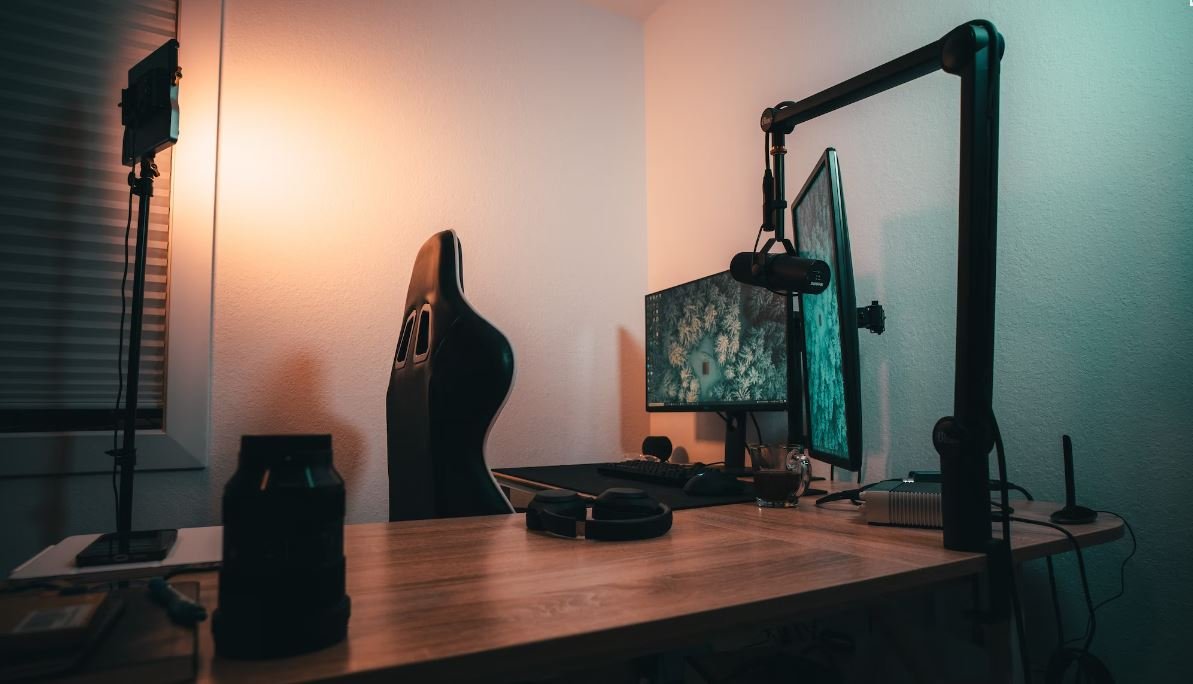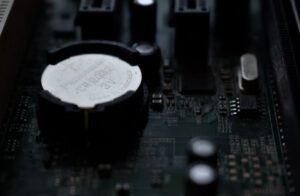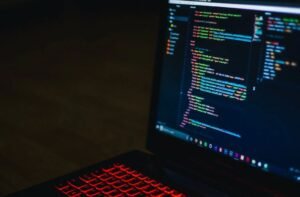Generative Art Music
Generative art music is a fascinating field that combines the creativity of musicians with the power of algorithms. It allows artists to create unique and ever-evolving compositions by using code to generate sounds, melodies, and rhythms. This innovative approach to music creation breaks traditional boundaries and opens up new possibilities for both artists and listeners.
Key Takeaways
- Generative art music is a combination of creativity and algorithmic generation.
- It allows artists to create unique and dynamic compositions.
- Generative music breaks traditional boundaries and offers new experiences for listeners.
Combining Artistry with Algorithms
At the core of generative art music lies the intersection between artistic expression and algorithmic generation. Artists use custom-built software or existing platforms to create algorithms that define the rules for generating music. By inputting parameters, such as melody patterns, chord progressions, or even the style of music, they can create systems that produce sounds and compose music autonomously. This fusion of artistry and algorithms gives rise to compositions that continuously evolve and surprise both the artists themselves and the listeners.
For example, an artist could create an algorithm that generates melodies based on the Fibonacci sequence, resulting in intricate and mathematically influenced compositions.
The Power of Code
Generative art music relies on the power of code to generate complex musical structures. Artists utilize programming languages like Python or Max/MSP to create algorithms that manipulate sound parameters such as pitch, duration, and timbre. This allows them to experiment with different combinations of musical elements and create elaborate compositions. By leveraging the versatility of code, artists can push the boundaries of what is traditionally considered possible in music composition.
With code, artists can create dynamic systems that produce melodies that adapt and respond to external inputs or random variations.
Exploring New Experiences
Generative art music offers listeners a unique and ever-changing musical experience. Unlike traditional compositions, generative music has the ability to surprise and captivate listeners with novel combinations of sounds and melodies. Each performance or playback of a generative composition is a one-of-a-kind experience, providing a sense of discovery and unpredictability. It allows listeners to immerse themselves in a sonic landscape that is constantly evolving and exploring new possibilities.
Listeners can witness the birth and evolution of music in real-time, experiencing how algorithms shape the sonic journey.
Tables
| Algorithm | Characteristics |
|---|---|
| Markov Chains | Generates music based on probability and transition states, resulting in melodic and harmonic progression variations. |
| Cellular Automata | Applies rule-based transformations to musical cells, creating patterns that evolve over time. |
Generative art music opens up a world of possibilities for both artists and listeners. By combining artistry with algorithms, artists can create never-before-heard compositions that are constantly evolving. This innovative approach to music creation challenges traditional notions and allows for new and unique experiences. Generative art music offers listeners the chance to immerse themselves in a sonic journey that is ever-changing, unpredictable, and truly captivating.
With generative art music, the possibilities are endless, and the exploration of the intersections between art and algorithms continues to expand.

Common Misconceptions
Misconception 1: Generative art music is completely random
One common misconception about generative art music is that it is completely random and lacks any structure or intentional composition. In reality, generative art music is created through algorithms and rules that guide the generation of musical elements. While there may be an element of unpredictability, there is still a deliberate design and intention behind the music.
- Generative art music follows algorithms and rules.
- There is a deliberate design and intention behind generative art music.
- While unpredictable, generative art music is not completely random.
Misconception 2: Generative art music lacks creativity
Another misconception is that generative art music is less creative compared to traditional music created by human composers. This is not true. Generative art music often encompasses complex algorithms and intricate programming, requiring creative thinking and problem-solving skills. The algorithms serve as tools for composers to explore new musical possibilities, adding an additional layer of creativity to the music-making process.
- Generative art music requires creative thinking and problem-solving skills.
- The use of algorithms adds an additional layer of creativity in generative art music.
- Generative art music can explore new musical possibilities.
Misconception 3: Generative art music lacks emotion
Some people believe that generative art music, being created by machines or algorithms, lacks the emotional depth that human-composed music possesses. This is a misconception because generative art music can evoke a wide range of emotions and moods. Composers can program the algorithms to generate music that conveys specific emotional qualities, effectively capturing and expressing various emotions similar to traditional music.
- Generative art music can evoke a wide range of emotions and moods.
- Composers can program algorithms to generate music with specific emotional qualities.
- Generative art music can effectively capture and express various emotions similar to traditional music.
Misconception 4: Generative art music is only for experimental or avant-garde genres
There is a common misconception that generative art music is confined to experimental or avant-garde genres and is not suitable for mainstream or popular music. While it is true that generative art has gained popularity in experimental realms, it has also been embraced by composers and musicians in various genres, including electronic, ambient, and even pop music. Generative algorithms and techniques can be applied to create music in a wide range of styles and genres.
- Generative art music is not limited to experimental or avant-garde genres.
- Generative art has been embraced by composers and musicians in various genres.
- Generative techniques can be applied to create music in a wide range of styles.
Misconception 5: Generative art music is created solely by machines
Some people believe that generative art music is solely created by machines without any human involvement. This is not true. While generative art music involves the use of algorithms and automated processes, it still requires human input and decision-making. Composers and musicians are actively involved in designing the algorithms, making choices about parameters and rules, and curating the generated music to create the desired outcome.
- Generative art music requires human input and decision-making.
- Composers and musicians actively design the algorithms and make choices about parameters and rules.
- The generated music is curated by humans to create the desired outcome.

Artists and Their Masterpieces
Below are some renowned generative artists and their notable works:
| Artist | Masterpiece | Year |
|---|---|---|
| Hiroshi Kawano | Memory Park | 2012 |
| Lia | Novaya Zemlya | 2005 |
| Marius Watz | Fractal Lab | 2011 |
Generative Music Software Comparison
Explore the differences between popular generative music software:
| Software | Price | Features |
|---|---|---|
| Max/MSP | $399 (Full Version) | Modular environment, extensive control over audio parameters |
| SuperCollider | Free | Object-oriented, real-time audio synthesis, score generation |
| Reaktor | $199 (Player), $399 (Full Version) | Modular synthesis, signal-processing, customizable instruments |
Evolving Musical Styles Over Time
An examination of music genres and their popularity throughout history:
| Decade | Popular Genre | Key Artists |
|---|---|---|
| 1960s | Rock | The Beatles, The Rolling Stones |
| 1980s | Hip Hop | Run-DMC, Public Enemy |
| 2000s | Electronic Dance Music (EDM) | Daft Punk, The Chemical Brothers |
Audience Engagement in Generative Art
Comparing different forms of audience interaction with generative art:
| Form of Interaction | Description |
|---|---|
| Passive Observation | Audience members observe the generative art without direct interaction |
| Parameter Manipulation | Audience can modify specific variables in the generative process |
| Collaborative Generation | Audience actively contributes to the creation of the generative art |
Generative Art Installations
Discover captivating generative art installations around the world:
| Installation | Location | Year Created |
|---|---|---|
| The Weather Project | Tate Modern, London | 2003 |
| Wave UFO | Naoshima Island, Japan | 2011 |
| Aether | Gamut Gallery, Minneapolis | 2017 |
Generative Art Algorithms
Exploring the algorithms used in generative art creation:
| Algorithm | Description |
|---|---|
| Fractal | Mathematical shape that repeats infinitely while maintaining intricate detail |
| Cellular Automaton | Grid of cells where each cell’s state is determined by its neighbors |
| L-System | Axiom-based rewriting system producing complex patterns through iterations |
Generative Art and Emotional Response
An exploration of the emotional impact of generative artworks:
| Emotion | Artistic Element Used |
|---|---|
| Peaceful | Soft, flowing lines |
| Energetic | Bold, vibrant colors |
| Awe-inspiring | Large-scale, immersive installations |
Generative Art in Advertising
How generative art is utilized in advertising campaigns:
| Brand | Advertising Campaign | Generative Art Element |
|---|---|---|
| Year in Search | Animated data visualizations | |
| Coca-Cola | Share a Coke | Customizable generative bottle labels |
| Apple | Shot on iPhone | Generative photo collages |
Generative Art and Cultural Expression
Examining the use of generative art as a means of cultural expression:
| Culture | Generative Artwork | Symbols/Themes |
|---|---|---|
| Native American | The Balance of Nature | Tribal patterns, animals, natural elements |
| Japanese | Murasaki | Cherry blossoms, traditional patterns, Zen philosophy |
| Maori | Tukutuku | Geometric patterns, ancestral symbols, storytelling |
Generative art, through the symbiosis of music and visual elements, transcends the boundaries of traditional artistic expression. Artists like Hiroshi Kawano, Lia, and Marius Watz have pushed the boundaries of creativity with their generative artworks. With various software options available, such as Max/MSP, SuperCollider, and Reaktor, artists are empowered to craft unique soundscapes. This art form continues to evolve, with different genres gaining popularity across decades, from rock in the ’60s to EDM in the 2000s. Generative art welcomes audience engagement, ranging from passive observation to collaborative creation. Installations like The Weather Project, Wave UFO, and Aether captivate audiences worldwide. Algorithms like fractals, cellular automata, and L-Systems power the creation of generative art. These artworks evoke emotions, ranging from tranquility to awe-inspiring wonder. In advertising, brands like Google, Coca-Cola, and Apple incorporate generative art elements to engage their audiences. Lastly, generative art serves as a means of cultural expression, with Native American, Japanese, and Maori cultures utilizing symbols and themes that reflect their heritage.
Frequently Asked Questions
What is generative art music?
Generative art music refers to music that is created using algorithms and various computational techniques. It involves the use of rules and parameters to generate or evolve musical elements, such as melodies, harmonies, rhythms, and textures.
How does generative art music differ from traditional composition?
Unlike traditional composition, generative art music is often not created manually by a composer. Instead, it relies on computer programs or systems that generate music based on predefined rules or algorithms. This approach allows for the exploration of complex and unconventional musical structures.
What are the benefits of generative art music?
Generative art music offers several benefits, such as the possibility of creating unique and constantly evolving compositions. It allows for a non-linear and unpredictable musical experience, fostering creativity and experimentation. Additionally, it can be used as a tool for inspiration and as a source of new musical ideas.
What tools or software are commonly used to create generative art music?
There are various software and tools available for creating generative art music. Some popular ones include Pure Data, Max/MSP, SuperCollider, and Python programming language with libraries such as MIDIUtil and PyTorch. Each tool has its own strengths and features, catering to different levels of complexity and flexibility.
Can generative art music be used in live performances?
Absolutely! Generative art music can be used in live performances, often in conjunction with traditional musical instruments or performers. It can add an element of spontaneity and unique variations to the performance, creating an immersive and engaging experience for both the musicians and the audience.
Is generative art music copyrightable?
Yes, generative art music can be copyrightable, just like any other form of music. The person or entity responsible for creating the generative music composition holds the copyright, which grants them exclusive rights to reproduce, distribute, perform, and display the work.
Are there any legal considerations when using generative art music?
When using generative art music, it is important to respect copyright laws and licensing agreements. If you plan to incorporate generative art music in your own work, ensure you have the necessary permissions or licenses from the original creator. Consulting with a legal professional can provide you with guidance on specific legal considerations.
Can generative art music be used for commercial purposes?
Yes, generative art music can be used for commercial purposes, provided you have obtained the necessary rights or licenses. If you plan to use generative art music in a commercial project, such as a film, advertisement, or video game, it is important to secure the appropriate permissions to avoid any legal issues.
What are some examples of generative art music?
There are numerous examples of generative art music. Some well-known examples include “In C” by Terry Riley, which utilizes a system of musical patterns, and “Iannis Xenakis – GENDYN (1981)” that employs stochastic processes to generate musical structures. Additionally, there are various contemporary artists and composers exploring generative techniques, each offering unique interpretations.
Where can I learn more about generative art music?
There are several resources available for learning about generative art music. Online communities, forums, and websites dedicated to generative art music provide valuable information, tutorials, and discussions. Furthermore, there are books and academic papers that delve into the theory and practice of generative art music, offering comprehensive insights into this fascinating field.




